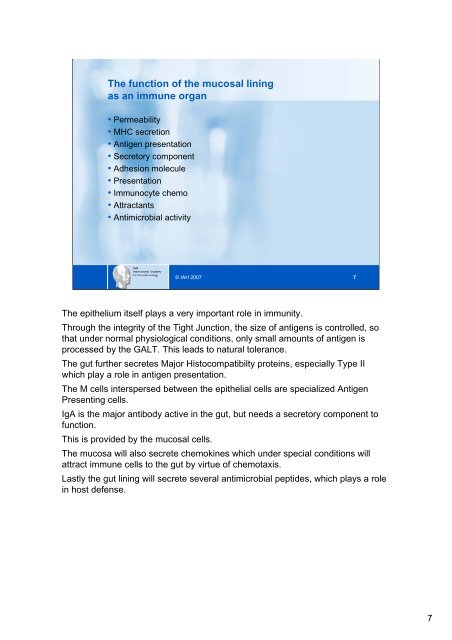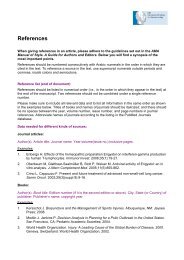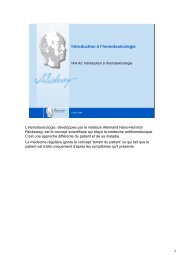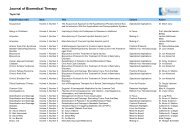IAH AC Gastrointestinal Disease
IAH AC Gastrointestinal Disease
IAH AC Gastrointestinal Disease
Create successful ePaper yourself
Turn your PDF publications into a flip-book with our unique Google optimized e-Paper software.
The function of the mucosal lining<br />
as an immune organ<br />
• Permeability<br />
• MHC secretion<br />
• Antigen presentation<br />
• Secretory component<br />
• Adhesion molecule<br />
• Presentation<br />
• Immunocyte chemo<br />
• Attractants<br />
• Antimicrobial activity<br />
© <strong>IAH</strong> 2007<br />
7<br />
The epithelium itself plays a very important role in immunity.<br />
Through the integrity of the Tight Junction, the size of antigens is controlled, so<br />
that under normal physiological conditions, only small amounts of antigen is<br />
processed by the GALT. This leads to natural tolerance.<br />
The gut further secretes Major Histocompatibilty proteins, especially Type II<br />
which play a role in antigen presentation.<br />
The M cells interspersed between the epithelial cells are specialized Antigen<br />
Presenting cells.<br />
IgA is the major antibody active in the gut, but needs a secretory component to<br />
function.<br />
This is provided by the mucosal cells.<br />
The mucosa will also secrete chemokines which under special conditions will<br />
attract immune cells to the gut by virtue of chemotaxis.<br />
Lastly the gut lining will secrete several antimicrobial peptides, which plays a role<br />
in host defense.<br />
7
















